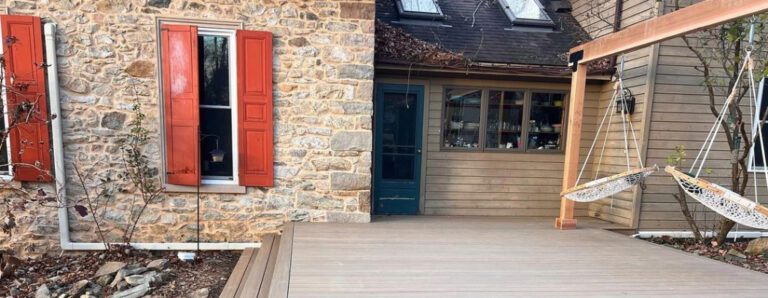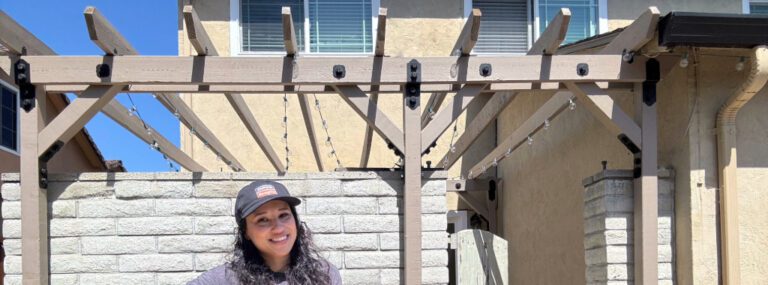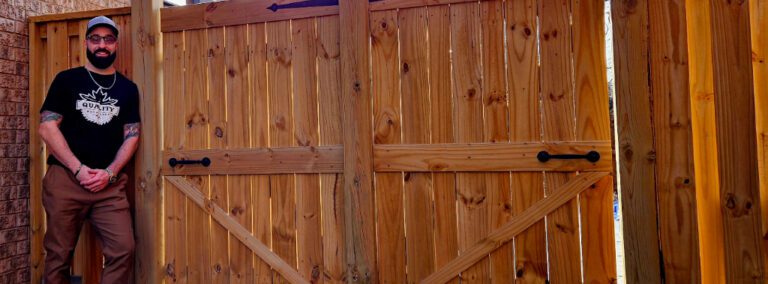
My name is Henry Ryals, the owner and founder of Ryals Design Build, LLC. As the son of an architect, I’ve been involved in construction all my life. After a stint in college, I served as an apprentice in the United Brotherhood of Carpenters, which was where I discovered my passion for craftsmanship. After journeying out, I started my own company designing and building custom homes, remodels, and additions. Our purpose is to build timeless, authentic places that our clients will love for years to come.
Our clients on this project wanted a timber frame pergola off the back of their house to serve as an outdoor living area and eventually as an outdoor kitchen. They wanted a traditional, rustic look with as few exposed fasteners as possible. Through discussion with the structural engineer, Stability Engineering of Corvallis, we settled on the Simpson Strong-Tie line of concealed structural connectors for most of our structural connections.
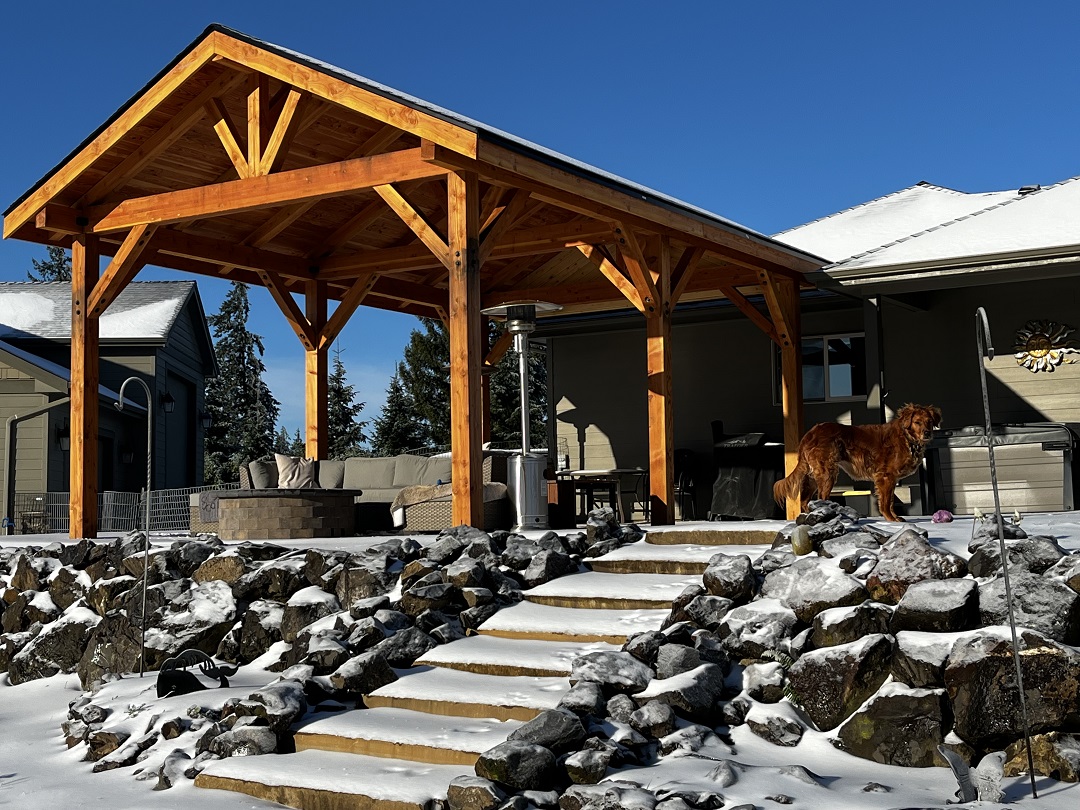
Concealed structural hardware usually consists of custom fabricated knife plates connected to timbers with dowels or bolts. This is a very expensive and time-consuming proposition, as each piece of hardware must be designed, fabricated, inspected and usually galvanized before construction can begin. The Simpson Strong-Tie concealed connector line is an excellent off-the-shelf solution for medium-scale timber framing. The fact that it is already tested, engineered and readily available is a huge time savings in the design and construction process.
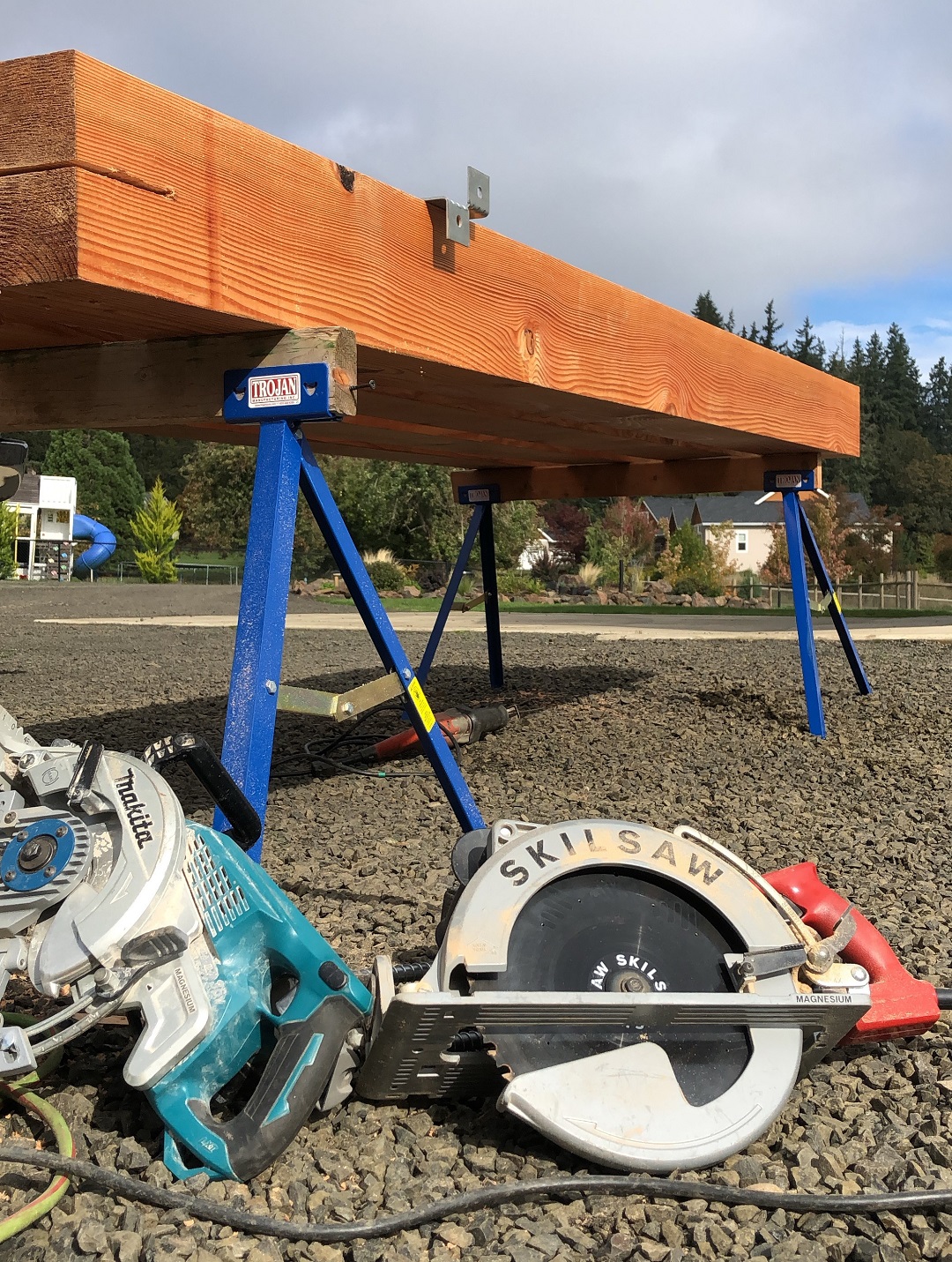
On this project, we used the concealed post tie, concealed beam tie, and concealed joist tie (CPT88z, CBT4z, & CJT3z). The post ties and joist ties are a snap to install. One or two slices with a beam saw through the end of the member makes enough of a kerf for the knife plate to slide snugly into, leaving behind only a clean-cut line.
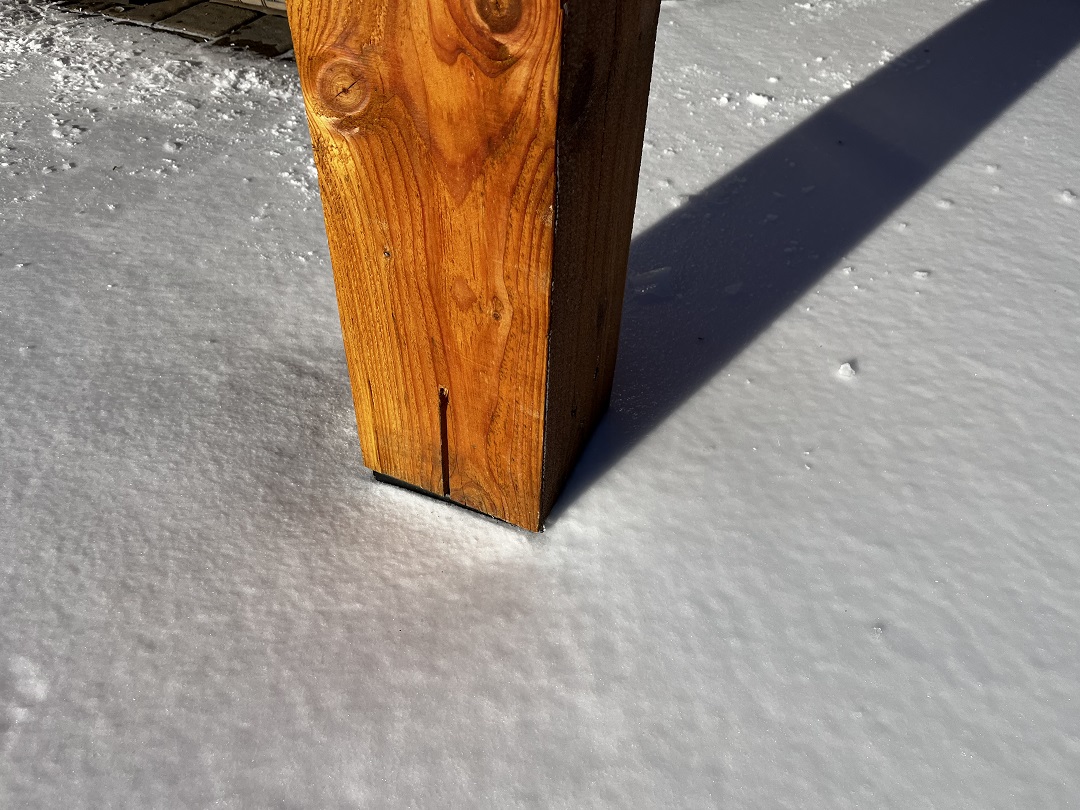
The templates included in each box make it easy to locate the holes for the chamfered dowels, which sink in with a few taps from a hammer and a nail set. They also give a little more leeway with alignment than threaded rods without having to worry about marring threads.
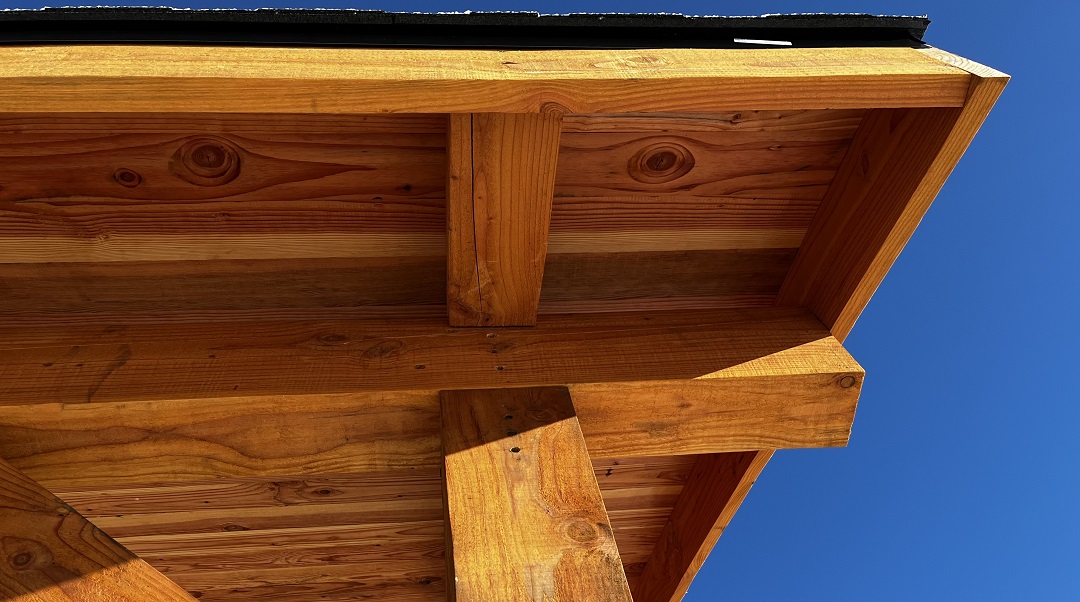
The cylindrical Beam Tie is a little trickier, because a 1 1/4″ auger bit on a Milwaukee Hole-Hawg® drill is needed to secure the mortises into the post and beam. Make sure the hole is drilled perfectly straight into the wood, or the dowels will be difficult to align with the holes in the tie.
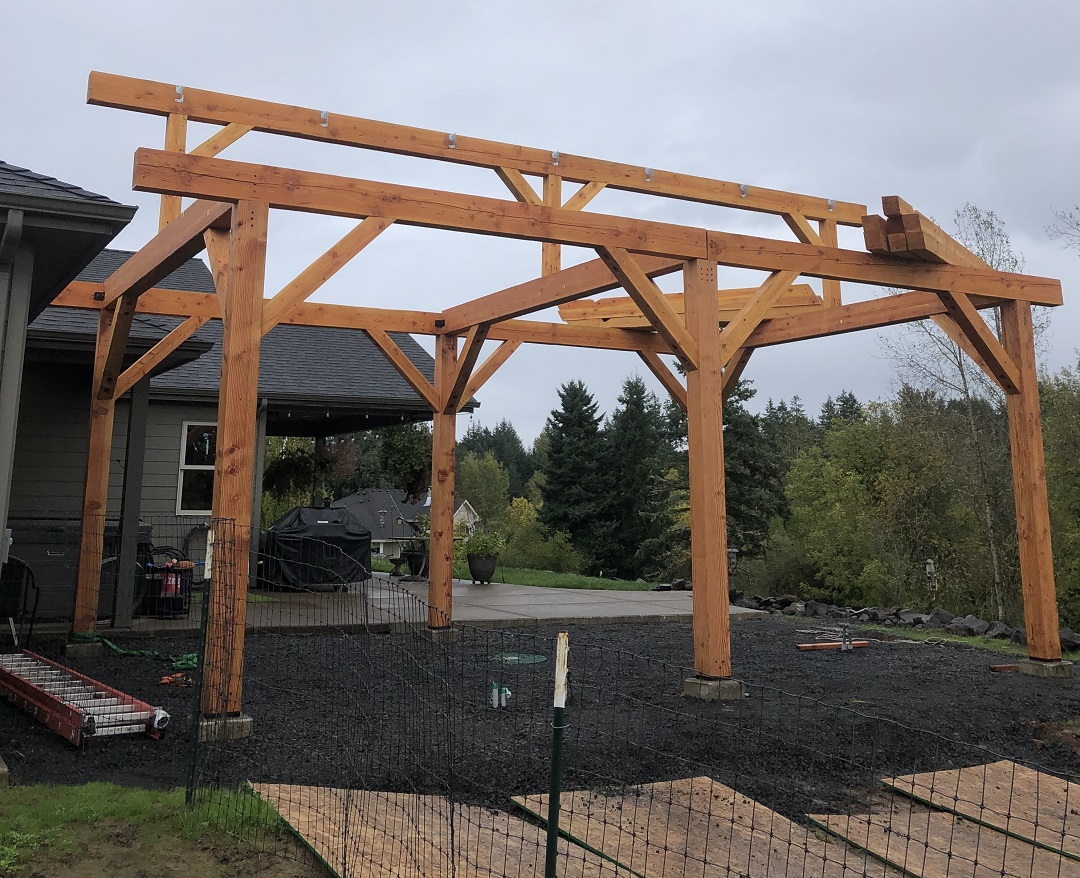
As with any timber frame project, high-quality wood is an absolute necessity. All structural members should be No.1 or Select Structural and free-of-heart-center. This is important not only for aesthetics but also for integrity of connections. Wood with too many checks, splits or knots may not be able to successfully transfer load into mortised hardware, and wood which is twisted or warped will be very frustrating to fit together.
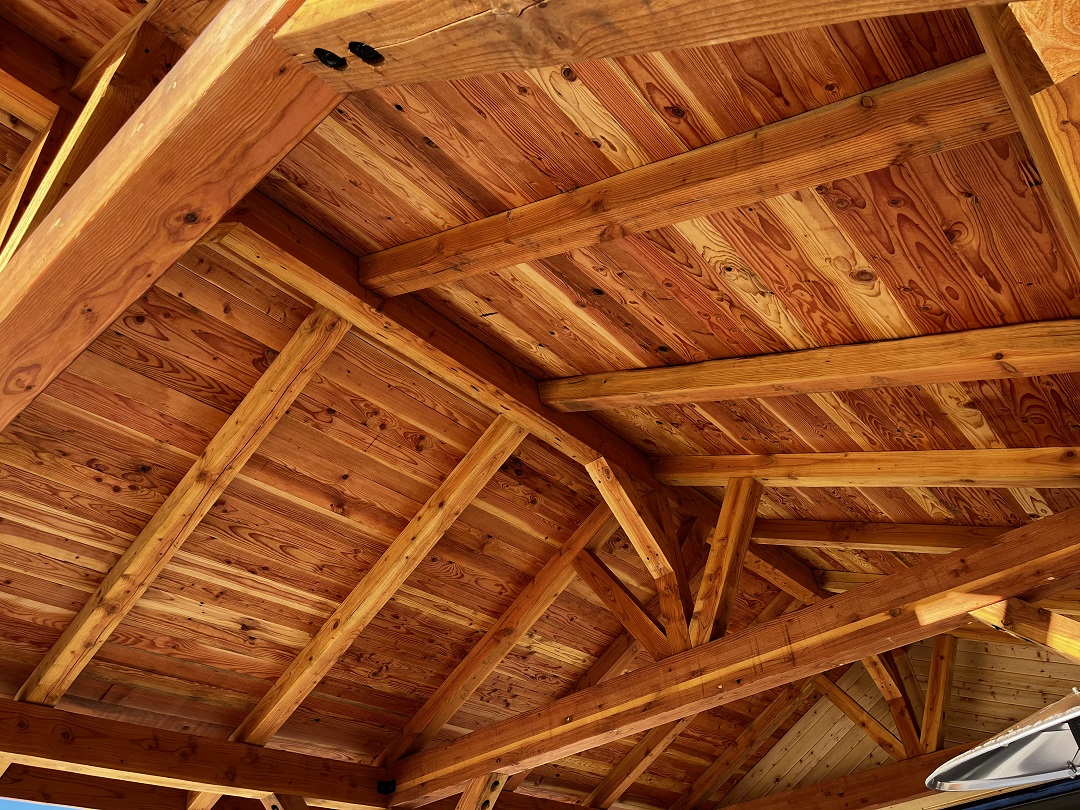
Overall, the clients were very pleased with the finished building, and so were we. Other than a few small slices and holes, the connections were nearly seamless. We do quite a bit of this kind of work on our houses, so we’ll definitely be using this hardware in the future. Its strength, ease of installation, and overall value are truly unmatched.
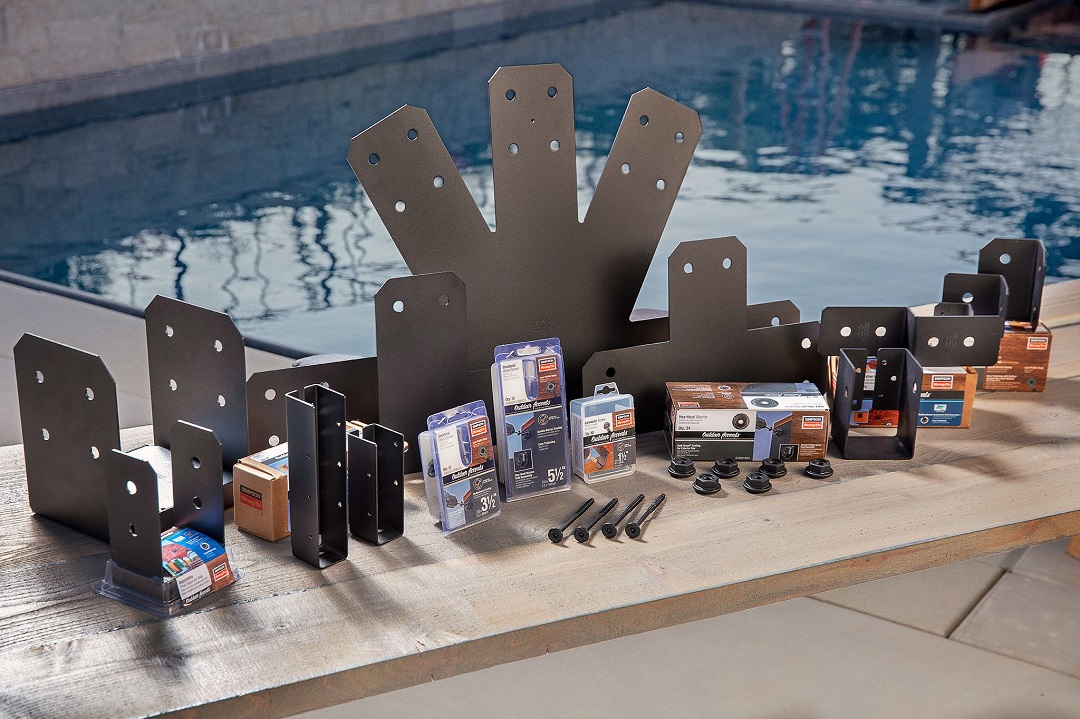
One note: It takes a competent carpenter and some expensive tools to pull this off, but the results are well worth it. For a DIYer, I’d suggest using Simpson Strong-Tie’s Outdoor Accents® product line: It’s a more user-friendly solution for lightweight pergolas and trellises.
